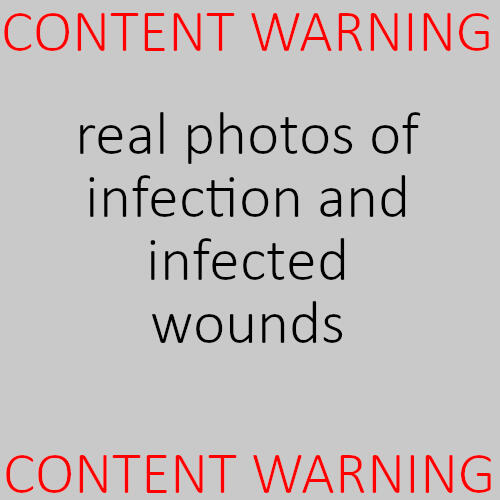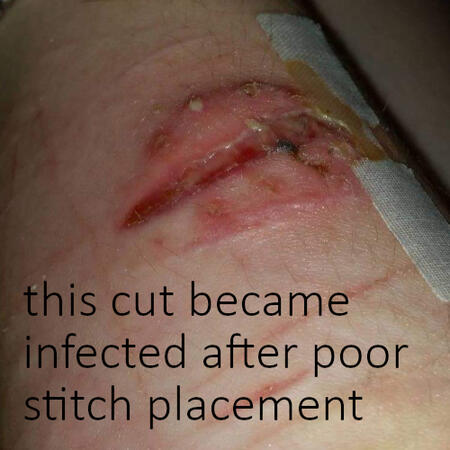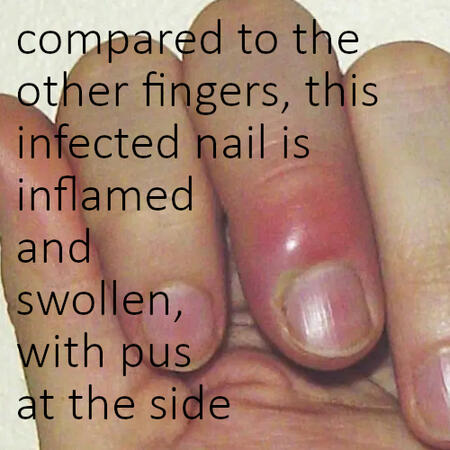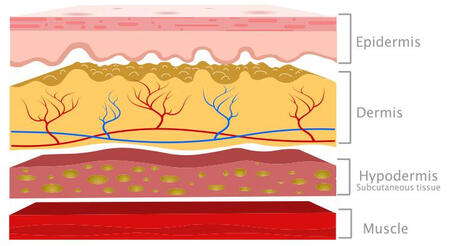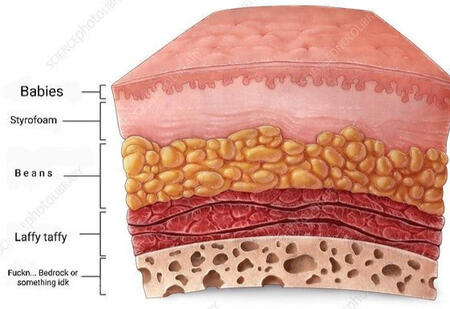welcome to my guide of aftercare for self harm! i hope this guide helps at least one person care for their self harm and provides useful information.
useful supplies
having a good first aid kit is always a good idea whether or not you are caring for self harm. here is a list of common and useful supplies and how to use them.
antibiotic ointment is used for treating and preventing bacterial infections on the skin. to use, apply only enough to spread a thin layer over the wound using a clean fingertip or cotton swab.
elastic bandages are traditionally used to improve circulation and reduce swelling, but can also be used to hold large bandages down if there is no tape or adhesives. hold down an end of the wrap, and firmly without cutting circulation off, wrap around the body part until you reach the end. fix by tying or with metal clips.
gauze is a multi use, versatile material that comes in many forms, sizes, and applications. to use for cleaning, saturate with lukewarm water or cleanser and gently pat at the wound. to use for absorption of fluids, use gauze slightly larger than the injury for optimal cushioning. lay on the wound after cleaning and applying ointment, and then apply something to hold it down if it is not already adhesive, such as a wrap or tape.
some gauze comes in a roll, which is for dressing larger wounds.
for cleanliness, use sterile-packed gauze.
cohesive bandages are a great alternative for those who may have adhesive allergies, no tape or adhesives on hand, or sensitive skin. it does not stick well to hair, skin, or nails, but adheres to itself strongly and can stretch well. use it like you would the elastic bandage, but tape or pins are not needed because it will stick to itself.
medical tape is a skin-safe tape used for holding down dressings to the skin. it can be made of a variety of materials, but is not waterproof. good quality medical tape can be torn by hand and keeps a clean edge. it is used similarly to crafting tape in which a section large enough to hold the edges of a bandage down is applied.
removing adhesive from bandages and tape can be painful, stressful, and irritating to the skin. medical adhesive remover comes in a spray or pad form. for the wipes, apply to the edges of the bandage, and as you slowly remove the adhesive section, continue rubbing in the remover until finished. be sure to wash it off to prevent irritating the wound. for spray form, spray onto the entire bandage and wait a few minutes before removing the bandage slowly. again, wash off remainder.
more commonly referred to by the brand name band aid, these are dressings that adhere to whatever they are placed on. these also come in a large variety of types and sizes for different uses. choose the best for your needs (latex free, waterproof, joint, etc.). remove the tabs covering the adhesive and place the dressing section over the wound. avoid applying the adhesive part on the wound, because it will rip up the scab during removal. some types may irritate the skin for various reasons such as adhesive allergies, sensitive skin, or simply removing a bandage too roughly. a special type of adhesive bandage is called a butterfly bandage, or an epi-strip. this is used to close a gaping or otherwise large cut and lower the chance of large scarring.

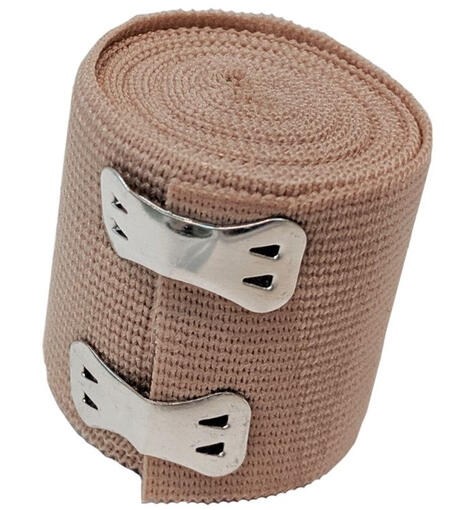
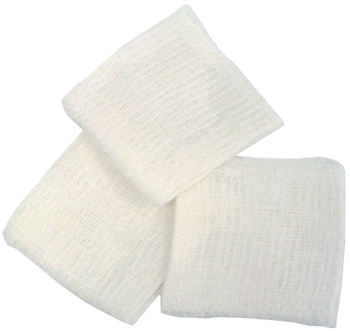

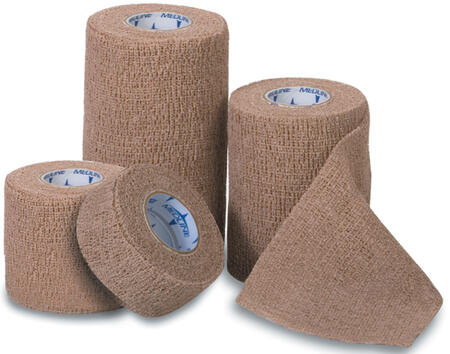
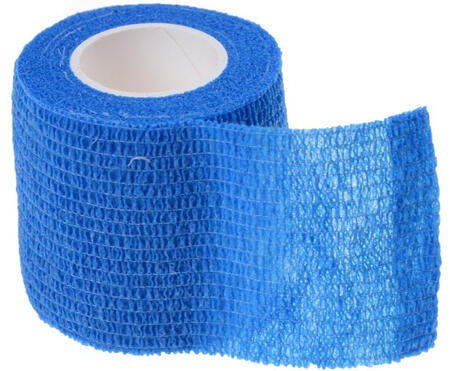
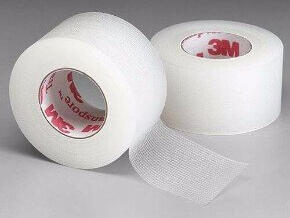
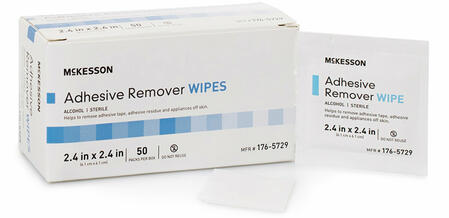
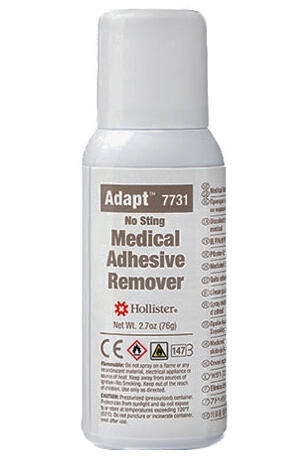

the skin is the largest organ in the body with multiple functions. it insulates, releases sweat and toxins, provides a barrier from the outside, and protects from UV rays.
the top layer of the skin is called the epidermis. this is the layer you see and shed naturally. it is composed of multiple layers of cells, with the topmost being dead cells that have been keratinized to be water resistant. this layer is commonly called cat scratches or epi cuts, and is the same depth of a paper cut.
the next layer is the dermis. this layer contains blood vessels, oil and sweat glands, hair follicles, muscles that cause goosebumps, and nerve endings. cuts this deep appear white at first, and then fill with blood. these are often called styro cuts because of the white appearance.
the hypodermis is where skin fat is stored as well as connective tissue and larger blood vessels. this layer appears bubbly and yellow from the fat tissue, giving its cut nickname as beans.
in between the hypodermis and the muscle layer is fascia and the epimysium, which is what holds our muscle tissue together. it is white in appearance, but is still thin enough to cut through, reaching muscle.
signs of infection
infection is when bacteria or other microcellular organisms (living things we can't see with our normal eyes) are within a wound and our body is attempting to kill it. this section contains photos of infection.
symptoms
• unusual redness and heat produced from wound
• swelling
• thick pus or seepage of nonclear fluid
• unpleasant odor
